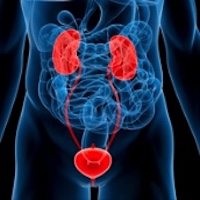 Smart Citations
Smart CitationsSee how this article has been cited at scite.ai
scite shows how a scientific paper has been cited by providing the context of the citation, a classification describing whether it supports, mentions, or contrasts the cited claim, and a label indicating in which section the citation was made.
Modeling the contribution of the obesity epidemic to the temporal decline in sperm counts
Objective: Total sperm count (TSC) has been declining worldwide over the last several decades due to unknown etiologies. Our aim was to model the contribution that the obesity epidemic may have on declining TSC. Materials and methods: Obesity rates were determined since 1973 using the WHO’s Global Health Observatory data. A literature review was performed to determine the association between TSC and obesity. Using the measured obesity rates and published TSC since 1973, a model was created to evaluate the association between temporal trends in obesity/temperature and sperm count. Results: Since 1973, obesity prevalence in the United States was increased from 41% to 67.9%. A review of the literature showed that body mass index (BMI) categories 2, 3, and 4 were associated with TSC (millions) of 164.27, 155.71, and 142.29, respectively. The contribution to change over time for obesity from 1974 to 2011 was modeled at 1.8%. When the model was changed to represent the most extreme possible contribution to obesity reported, the modeled change over time rose to 7.2%. When stratified according to fertility status, the contribution that BMI had to falling sperm counts for all comers was 1.7%, while those presenting for fertility evaluation was 2.1%. Conclusions: While the decline in TSC may be partially due to rising obesity rates, these contributions are minimal which highlights the complexity of this problem.
Downloads
How to Cite
PAGEPress has chosen to apply the Creative Commons Attribution NonCommercial 4.0 International License (CC BY-NC 4.0) to all manuscripts to be published.

 https://doi.org/10.4081/aiua.2020.4.357
https://doi.org/10.4081/aiua.2020.4.357





